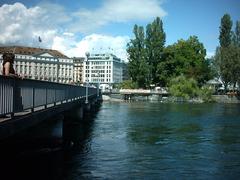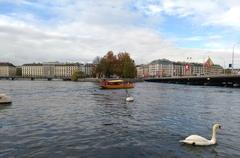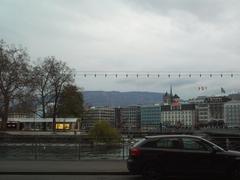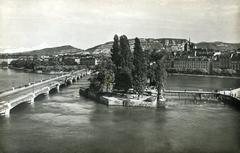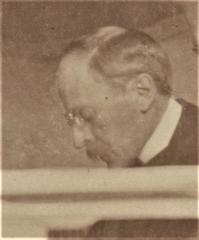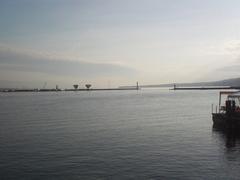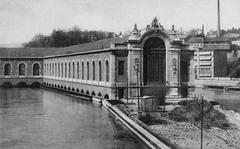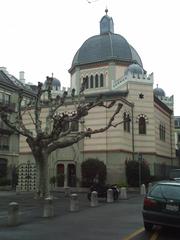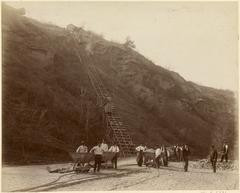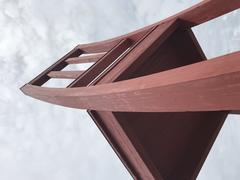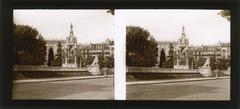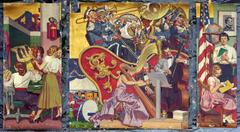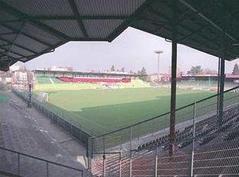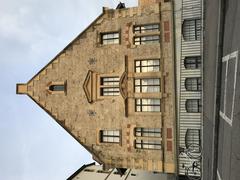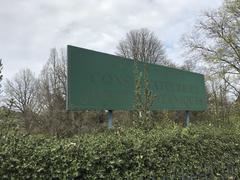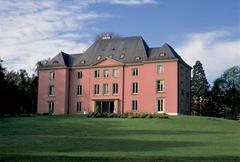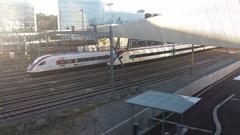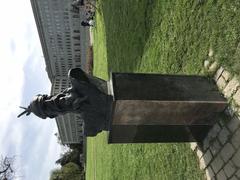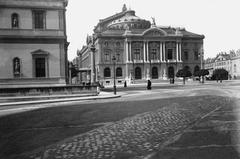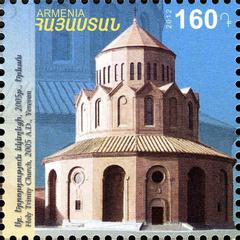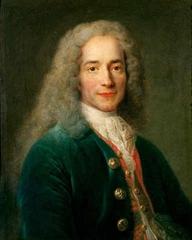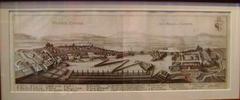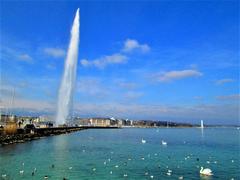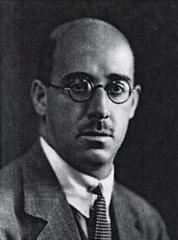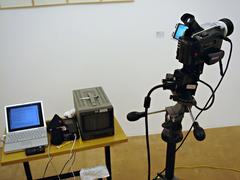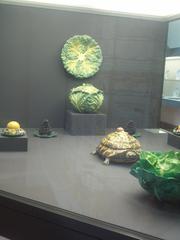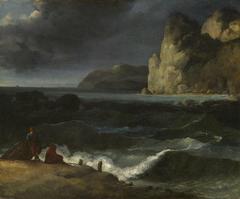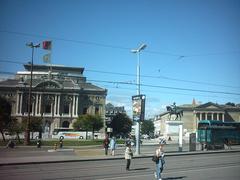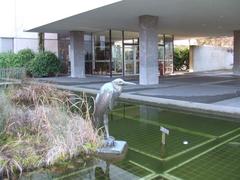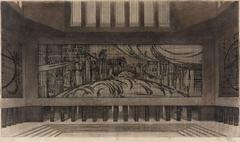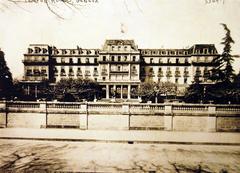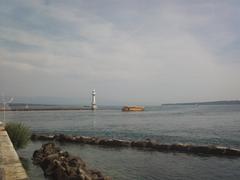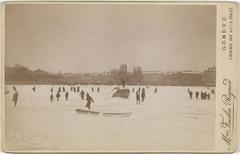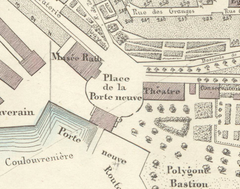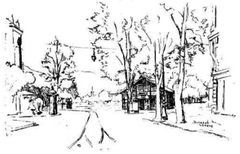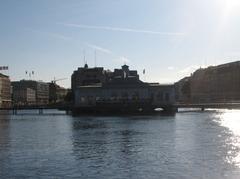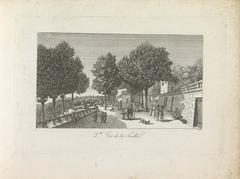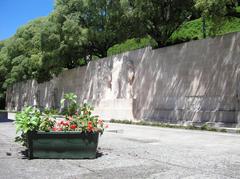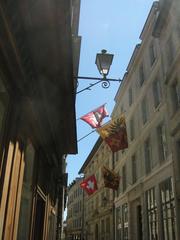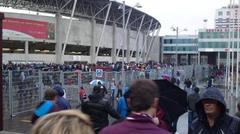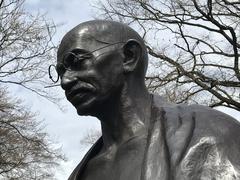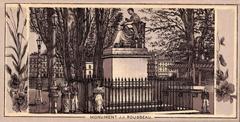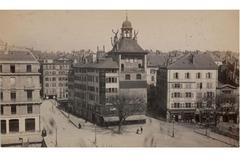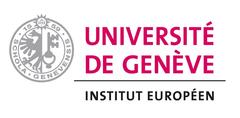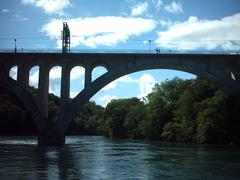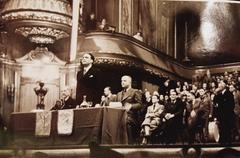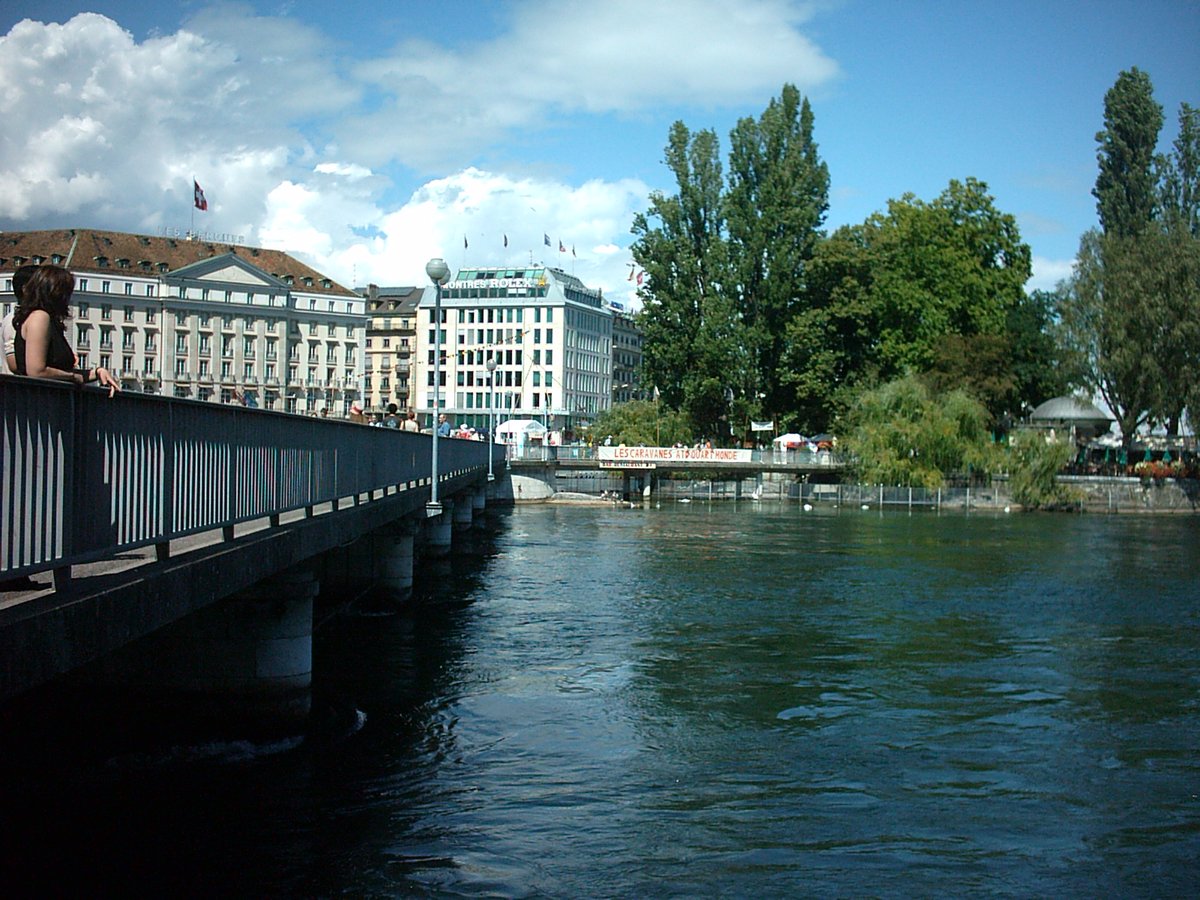
Île Rousseau Visiting Hours, Tickets, and Detailed Guide to Geneva’s Historic Island Park
Date: 15/06/2025
Introduction: Île Rousseau’s Place in Geneva’s History
Nestled at the convergence of Lake Geneva and the Rhône River, Île Rousseau is a tranquil, tree-lined island and a cherished emblem of Geneva’s layered history and cosmopolitan spirit. Originally known as “Île des Barques” due to its role as a medieval defensive outpost and mooring site, the island has evolved from strategic necessity to a beloved urban park and cultural landmark. In 1835, it was renamed after Jean-Jacques Rousseau, Geneva’s most famous philosopher, whose thought shaped the Enlightenment and modern human rights. Dominated by James Pradier’s bronze statue of Rousseau, the island celebrates the city’s enduring embrace of intellectual legacy and universal values (myswitzerland.com, explorial.com, swissinfo.ch).
Today, Île Rousseau stands as a public park open year-round, providing visitors with panoramic city views, lush green spaces, and a peaceful sanctuary in the city center. Its bird sanctuary, landscaped paths, and proximity to major Geneva attractions make it an ideal destination for history buffs, nature lovers, and those seeking quiet reflection. This detailed guide covers the island’s origins, cultural significance, practical visitor information, nearby attractions, and tips for making the most of your visit (genevesecrete.com, geneva.info).
Table of Contents
- Origins and Early History
- Transformation and Naming
- Historical and Cultural Significance
- Visiting Île Rousseau: Hours, Tickets, and Accessibility
- Practical Visitor Information
- Attractions and Features
- Activities and Events
- Nearby Highlights
- Travel Tips
- FAQs
- Visuals and Media
- Further Reading
- Conclusion and Call to Action
Origins and Early History
Île Rousseau’s strategic location at the mouth of the Rhône made it an integral part of Geneva’s medieval defenses and commerce. Known as “Île des Barques,” the island served as a checkpoint for river traffic and a protective barrier for the city, connected by bridges to both banks. As Geneva’s fortifications were gradually dismantled in the 18th and 19th centuries, the island lost its military function and was reimagined as a public space (myswitzerland.com).
Transformation and Naming
With the city’s modernization, Île Rousseau was landscaped and opened for public enjoyment. In 1835, the city renamed the island to honor Jean-Jacques Rousseau, commissioning a bronze statue by local sculptor James Pradier. The statue, depicting Rousseau in deep thought, remains the island’s focal point and a symbol of Geneva’s Enlightenment ideals (myswitzerland.com).
Historical and Cultural Significance
Île Rousseau reflects Geneva’s shift from fortified stronghold to a city of diplomacy, culture, and intellectual engagement. The 19th-century dedication to Rousseau—whose writings on freedom, education, and society influenced the French Revolution and beyond—cemented the island as a living monument to the city’s intellectual heritage. The island also represents Geneva’s commitment to public green spaces as its urban population grew (genevesecrete.com).
Visiting Île Rousseau: Hours, Tickets, and Accessibility
- Opening Hours: Open 24 hours a day, year-round. Daylight visits are recommended for safety and optimal views.
- Admission: Free entry; no tickets required.
- Accessibility: Fully accessible via pedestrian bridges (Pont des Bergues), with paved, gently sloping paths suitable for wheelchairs and strollers.
- Transport: Central location with tram, bus, and foot access. Nearest public transport stops include “Bel-Air” (tram lines 12, 18) and “Molard.”
- Facilities: Benches, shaded areas, and a seasonal café. No public restrooms on the island; facilities are in nearby city center (explorial.com, geneva.info).
Practical Visitor Information
- Best Times to Visit: Spring and summer for blooms and long daylight; autumn for colorful foliage.
- Family Friendly: Open lawns and wildlife make it suitable for children.
- Pets: Dogs allowed on leash.
- Picnics: Allowed; please clean up after yourself.
- Safety: Geneva is very safe, but standard urban precautions apply.
Attractions and Features
Statue of Jean-Jacques Rousseau
The island’s centerpiece is Pradier’s contemplative bronze statue of Rousseau, surrounded by poplar trees. The arrangement evokes the philosopher’s time at Ermenonville and offers a place for reflection (swissinfo.ch).
Bird Sanctuary
Île Rousseau includes a small sanctuary supporting both resident and migratory birds, making it a peaceful spot for birdwatching and nature appreciation (geneva.info).
Panoramic Views
The island offers striking vistas of Lake Geneva, the Jet d’Eau fountain, historic bridges, and the city skyline—ideal for photography.
Café and Dining
A seasonal café serves light refreshments with scenic views. Visitors are also welcome to bring their own snacks or picnic.
Activities and Events
- Photography: Dramatic views of the statue, lake, and city.
- Birdwatching: Observe local and migratory species in a serene setting.
- Relaxation: Benches and shaded areas for contemplation.
- Cultural Reflection: Engage with Rousseau’s legacy and Geneva’s intellectual history.
- Special Events: Occasionally hosts flower festivals, art workshops, and is a venue for cultural commemorations; not typically used for large-scale events (myswitzerland.com, explorial.com).
Nearby Highlights
- Old Town: Medieval streets, St. Pierre Cathedral, Place du Bourg-de-Four.
- Parc des Bastions: Rousseau-related museum and monuments.
- Flower Clock (L’Horloge Fleurie): Iconic floral landmark in Jardin Anglais.
- Jet d’Eau: World-famous water fountain visible from the island.
- Tour de l’Île: Remnants of Geneva’s medieval fortifications (geneva.info, outofofficemindset.com).
Travel Tips
- Language: French is the main language; English widely spoken in tourist zones.
- Currency: Swiss Franc (CHF); credit cards accepted, but small cash useful.
- Transport: Free public transit for hotel guests via the Geneva Transport Card.
- Connectivity: Reliable mobile data; eSIM options like Airalo available.
Frequently Asked Questions (FAQs)
Q: What are Île Rousseau’s visiting hours?
A: Open 24 hours, year-round. Daylight visits are safest and most scenic.
Q: Is there an entrance fee?
A: No, the island is free to enter.
Q: Is Île Rousseau accessible for those with disabilities?
A: Yes, with paved paths and pedestrian bridge access.
Q: Are there guided tours?
A: No dedicated tours, but many Geneva city tours include the island.
Q: Are there restrooms or cafes?
A: No restrooms on the island; a seasonal café operates in warmer months.
Visuals and Media
- Photos: Look for images of the Rousseau statue, panoramic lake views, seasonal flowerbeds, and birdlife.
- Virtual Tours: Available via Geneva Tourism and related websites.
- Alt Tags: Use descriptive text such as “Statue of Jean-Jacques Rousseau on Île Rousseau, Geneva” for accessibility.
Further Reading and Sources
- myswitzerland.com
- explorial.com
- genevesecrete.com
- geneva.info
- swissinfo.ch
- Geneva Tourism
- outofofficemindset.com
Conclusion and Call to Action
Île Rousseau exemplifies Geneva’s fusion of history, culture, and natural serenity. Its evolution from medieval outpost to Enlightenment monument and peaceful park mirrors the city’s broader transformation and ongoing commitment to public space and civic identity. Whether you’re interested in philosophy, urban nature, or simply wish to unwind amidst Geneva’s most iconic views, Île Rousseau offers a rewarding experience for every visitor.
Plan your visit today:
- Check the latest updates on the official Geneva tourism website
- Download the Audiala app for guided tours, maps, and cultural tips
- Follow us on social media for news and inspiration
- Share your own Île Rousseau experiences and photos
All information is accurate as of June 2025. For updates, consult the official Geneva tourism website and Evendo’s Île Rousseau guide.
